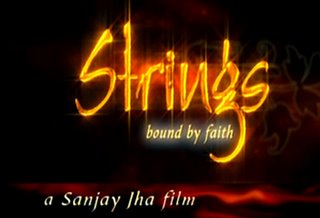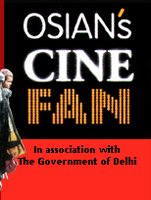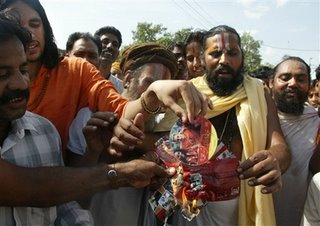Strings
Hemanti Sarkar, Editing 1994. F.T.I.I
When Sanjay Jha told me he had shot an English film during the 2003 Kumbh Mela at Nasik and wanted me to edit it, my first reaction was, "Oh no! Another bit of spiritual mumbo-jumbo for the phirangs."
But when I started editing, I realised that it was one of the most challenging projects I‘ve ever worked on.What Sanjay had: Scenes shot to a bare narrative about a Brit called Warren (Adam Bedi) who comes to the Kumbh after reading his great grandfather's diary. Warren hopes to find the India his great grandfather was so enamoured with, and unearth the hidden strings binding him to this place. He stays with a priest and his daughter and develops a relationship with her – in other words, just another love story. But along with this, Sanjay had about three and a half hours of candid footage of the Kumbh Mela attended by over 2,00,000 devotees. Sanjay had a strong belief that somehow all this footage could be incorporated into the narrative. A love story against the backdrop of war, famine, riots or a sinking ship can be created and shot to requirement, but a Kumbh Mela of millions cannot (at least, not for an 80 lakh budget). Besides the Kumbh Mela is not a calamity but a spiritual experience for the protagonist. The pilgrimage is as much an internal journey as an external one, and that is what it should be for the viewer.
This was indeed a daunting task for both Sanjay and me. What worked in our favour was that none of the actors were known faces, so Sanjay had managed shots of the different characters walking or taking part in the Kumbh without people looking into the camera. And the film had looser scenes of Warren and the others just walking and visiting other places which could be shuffled around to get the desired structure.As we started working we realised that the Kumbh had become a strong silent protagonist, who influences all the other characters.
Initially when the Kumbh begins, it's just wide shots of faceless millions milling towards the river, as seen by Warren from the window. By the time the second song starts (Piya Milan ko Jaana), a sceptical Warren in his designer suit steps out to attend ‘India’s grandest festival'. We see incredulous naked sadhus and the old bunkum co-existing with equally frivolous rock groups, and millions taking their first dip. All this becomes part of the eternal circus which is the spirit of the Kumbh – a festival celebrating creation itself.As the film progresses Warren begins to join the circus, as in the rain song. As Warren, Krishna (the priest's daughter played by Tanishtha Chaterjee) and Maya celebrate the rain, baharupiya as Shiva takes shelter only to join back as Hanuman, (this constant interchange between gods and the concept of many gods and one god is a repeated theme in the film).
Amazingly, Sanjay had this footage of thousands of devotees braving the rain as they wait to take a dip, or others bathing in the drizzle. These we incorporated, giving the rain celebration a wider dimension. The song ends on shots of flash floods at Nasik where the river is in spate. Elsewhere, when Warren comes closer to Krishna, the Kumbh reveals a more human face. I could use early morning footage of common people at the Kumbh, some drying clothes, some praying, an old woman cautiously drawing a tilak. This built up the perfect ambience for Krishna meditating on the temple steps. Her faith blends with the faith of the common people and moves Warren. It is with her that he too merges with the millions as they roam the Kumbh. Soon their love song starts.By the time the second cut was done, we realised that the backdrop had given the film such a realistic travelogue texture that a typical lip synched love song just wouldn't work so we re-edited using shots of Warren and Krishna at Tribakeshwar. The challenge also was to interweave the Kumbh to express the mental state of the characters. As Warren gropes to find his great grandfather's India he does not connect to the maniacal naked sadhus taking a dip at 2 am. When things fall apart for Krishna and her father and their faith is shaken, they cannot blend and the Kumbh becomes alien.I don’t really know whether what we‘ve tried has worked or these are just thoughts in my head, and would like feedback in that respect once people see the film. Of course the film has a roughness that cannot be overlooked but I had enjoyed experimenting and editing a fiction film more in a documentary style, shuffling and changing things around to make the structure work.
http://www.graftii.com/ezine12.aspx
















1 Comments:
can u tell me whether i can get the lyrics for the song...
Post a Comment
<< Home